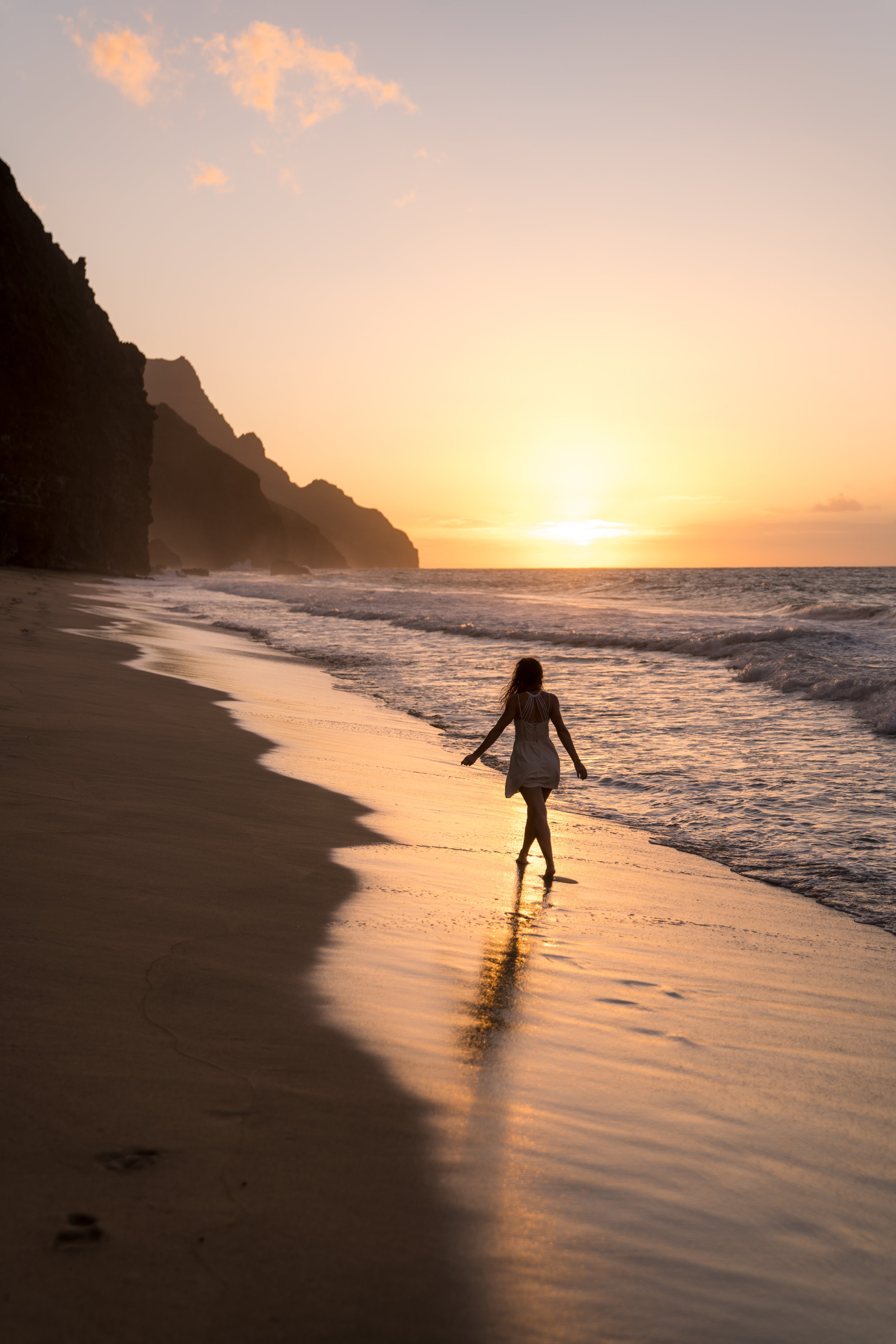Hiking the Kapālama Ridge Trail to Puʻu Lanihuli on Oʻahu, Hawaiʻi
Distance: 7.6 miles / 12.2 km
With the Kalihi Saddle to the north and the Nuʻuanu Saddle to the south, the Kapālama Ridge Trail to Puʻu Lanihuli is one of only a few peaks along the Koʻolau Summit Trail (KST) that truly stands alone from the rest, as it rises to roughly 2,780 ft. (847 m) above the Honolulu skyline.
In any case, the Kapālama Ridge Trail is, without a doubt, one of the more challenging ridge trails in the southern Koʻolaus, as so few hikers choose to make the ascent compared to neighboring hikes, such as Puʻu Kōnāhuanui.
Kapālama Ridge Trailhead Parking
Parking for the Kapalāma Ridge Trailhead is located near the top of ʻĀlewa Heights within or near the Na Pueo Mini Park.
I say near because there are really so few places to park within the park, but if you think you’ll be back after the park gate locks in the evening, it’s best to leave your car on ʻĀlewa Drive.
Google Maps Directions: Na Pueo Mini Park
My Hawaiʻi Hiking Checklist
Osprey 3L Water Bladder - The Osprey 3L water bladder is the most universal hiking and backpacking water bladder on the market, and it’s my go-to because of the slide-off seal that allows it to be quickly filled from the top. Additionally, individual parts are easily replaceable, such as the bite valve.
Blister / Heel Protectors - I swear by these cheap, amazing heel protectors to prevent blisters for nearly every kind of hiking and backpacking that I do!
Black Diamond Headlamp - Personally, I recommend the Black Diamond Storm because it is one of the brightest, lightest, and longest-lasting headlamps on the market—and trust me, the weight-to-battery-life ratio really does matter!
Hiking / Trail Running Shoes - Depending on the type of trail, I prefer to use either the Keen Targhee for longer, more rugged hiking or the HOKA Zinal Trail-Running Shoe for lighter, less intense trails. In either case, both have been amazing to me for many years across countless environments, and both can be found in men’s and women’s sizes. - (Men’s Keen / Women’s Keen) (Men’s HOKA / Women’s HOKA)
Waterproof Rain Shell - You never know when it may rain, and I’ve learned over the years that a rain shell is far better than a rain jacket. By this, I mean that it’s best to have something that the water will roll right off of, which is why I recommend the Patagonia Torrentshell 3L available in both men’s and women’s sizes.
High SPF Sunscreen - Packing high-SPF sunscreen is a must for long days outside!
Hiking the Kapālama Ridge Trail
From the Na Pueo parking lot, the trailhead is located in the back of the park toward the water tank, as shown in the photos below.
Kapālama Contour Trail
When you get to the water tank in the photo above, go right, which is where the Kapālama Ridge Trail begins.
This trail will contour Kapālama Ridge for about half a mile until you get past all of the residential houses in the ʻĀlewa Heights neighborhood.
Then, after about 0.5 miles (0.8 km), the trail will regain the ridgeline, where it begins following the fence in the photo below.
Note that after the contour, Kapālama Ridge will remain on the ridge for the remaining hike to the summit.
After the fence, make a mental note when you reach this little turn on the ridge.
This will be important for the hike back, and it can be very easy to miss, especially if it’s dark and there are no ribbons.
At about the halfway point through the Ironwoods and Cook pines, I found this little Jackson’s chameleon hanging out on this log.
Eventually, the trail makes an abrupt transition from the Cook pine forest to a mixed Uluhe-Koa-ʻŌhiʻa forest, which will continue for much of the remaining hike to the summit.
That being said, the overgrowth from the Uluhe doesn’t start to get worse until the Kamanaiki Ridge junction, at about the 2.8-mile (4.5 km) mark.
The Alarm Clock
The alarm clock on Kapālama Ridge is a little-known secret.
By this, I mean that many years ago, some hiker put an alarm clock in one of the trees right in this area.
However, even after many hikes up Kapālama and being told exactly where to look, I’ve still never seen it. If you know more, please leave a comment below!
Where the ridge on the left, known as Kamanaiki Ridge, meets up with Kapālama, the hike reaches a bit of a mental 'halfway' point.
By this, I mean that when ridges come together, it’s a good mental checkpoint to differentiate between the easier and more maintained sections, and the slightly more challenging sections that lead to the summit.
Kapālama-Kamanaiki Ridge Junction
The small opening in the photo below is where Kamanaiki Ridge, out of Kalihi Valley, meets with the Kapālama Ridge Trail.
On a side note, I would never recommend Kamanaiki Ridge, as it’s very overgrown, since so few hikers traffic the trail.
After the Kapālama-Kamanaiki junction shown above, expect the rest of the trail to be a bit slower and more overgrown than the ridge up to this point.
For this reason, I recommend wearing hiking pants to help with the overgrowth that increases toward the Koʻolau Summit, which is comparable to other Oʻahu hikes, such as Schofield-Waikāne or Waimano.
The pants below are my recommendations that hold up the best with the overgrowth here in Hawaiʻi, but with any hiking pants that need to be durable, make sure that they are at or near 100% nylon. This is really the most important factor!
Not long after the previous junction, the Kapālama Ridge Trail drops slightly before the final ascent up to the summit.
Following this descent, the rest of the hike climbs between 500-600 ft. (152-183 m) up the final ridge to the top.
Kapālama Ridge Summit
From the summit of the Kapālama Ridge Trail, you can see as far as Kualoa Ranch and Mokoliʻi to the north, and much of Oʻahu’s east side to the southeast.
However, this goes without saying that simply catching the summit on a clear day is a challenging thing to do, as the photo showing the ascent above is from a completely different day than the photos taken below.
In any case, it should be noted that the Kapālama Ridge Summit is not the true Puʻu Lanihuli summit, but rather, it’s the next peak over to the right (south) on the KST.
If you are interested in making the traverse over to the true summit, this is the small portion on the KST to get there.
However, in terms of what’s more beautiful or having a better view, both are very comparable to one another.
Puʻu Lanihuli ('True Lanihuli')
After the short traverse from the Kapālama Ridge Summit, Puʻu Lanihuli tops out at the true summit, standing at 2,780 ft. (847 m) above both Kalihi to the north and Nuʻuanu to the south.
Koʻolau Summit Trail (KST)
Warning
While the Kapālama Ridge Trail is a great hike for accessing certain parts of the Koʻolau Summit, that doesn’t go without saying that both the Kalihi Saddle to the north and the Nuʻuanu Saddle to the south are two of the most challenging and dangerous sections on the entire KST.
Therefore, if you did not prepare in advance to proceed further than Puʻu Lanihuli, I strongly advise turning back around at the summit.
Read My Separate Post: Koʻolau Summit Trail (KST)
Native Plants on the Kapālama Ridge Trail
Once the trail makes it above the non-native Ironwood-Cook pine forest, there are a variety of native plants to look out for, such as ʻŌhiʻa, ʻIeʻie, Koa, Alani, ʻAhakea lau nui, and even a few ʻOhe Mauka trees that can be seen along the ridge.
All said, if you’d like to know about these and tons of other native Hawaiian plants from across the islands, I encourage to the check out my separate post.
Read My Separate Post: Native Hawaiian Plant Guide
More Oʻahu Adventures
If you’re interested in reading about some more amazing Oʻahu adventures, check out my separate posts below!
Best Hotels & Restaurants in Waikīkī
If you’re trying to decided where to stay on Oʻahu, check out my top 10 list for the best resorts and restaurants in Waikīkī.
I break down what makes one hotel a better choice over another, so that you can find the best fit for your stay on the island.
Read My Separate Post: Best Waikīkī Hotels & Restaurants
HNL Airport-Hotel Shuttle
Prices on ride-share apps like Uber/ Lyft cannot beat the price of booking your hotel shuttle prior to arrival. I say this because there are additional fees for ride-share airport pick-ups at Honolulu Airport (HNL), which is why I recommend booking your transportation in advance using the options below.
Additionally, the last option below will go as far as the Ko ʻOlina Resorts on the West Side and Turtle Bay on Oʻahu’s North Shore!
Best Way to Book Rental Cars!
I travel quite a bit, and I know firsthand that finding a good rental car deal can be a challenge, but that’s why I recommend comparing all of your options with Discover Cars.
In short, Discover Cars is a well-known, reputable business that allows you to search for the best deal across companies, and they have the best full-refund cancellation policy I’ve ever seen, valid up to 72, or sometimes even 48, hours prior to your reservation!
Book Here: Discover Cars
Visiting Other Islands
If you are visiting Oʻahu or heading to another island, check out some of my personal recommendations for Oʻahu, Maui, Kauaʻi, Molokai, Lānaʻi, and Hawaiʻi Island (Big Island) in these separate posts.
If you’re trying to decide which island is right for your visit, check out my overview about each island in the post below.
Read My Separate Post: What is the Best Hawaiian Island to Visit?
What is the Best Time of Year to Visit Hawaiʻi?
The weather in Hawaiʻi can often appear to be warm and beautiful throughout the year, but in my experience, there is a lot more to consider when planning what time of year to visit the islands, such as what island you are considering, what sides of each island do you plan to stay, what activities are you most interested in, the wildlife, and countless other nuanced variables that can all impact the type of trip you can expect to have.
For these reasons, I highly recommend reading through my separate article to not only understand my thoughts regarding the best time of year to come to Hawaiʻi but also what you need to consider based on the time of year that you plan to visit.
Read My Separate Post: What is the Best Time of Year to Visit Hawaiʻi?
10 Best Tours & Excursions on Oʻahu
There are a lot of different tour options to choose from on Oʻahu, but to make it easier to decide, I made a list of my favorite tours because some things simply are better with a local guide!
Read My Separate Post: Best Tours on Oʻahu
Safety
All hikes in Hawaiʻi should not be compared to trails outside of the islands, and hikers should exercise due caution on every adventure, given that many are extremely dangerous.
By this, I mean that Hawaiʻi is known for hot, humid weather, steep, dramatic, and unstable cliffs, and flash floods, which can occur without warning. Therefore, it is important that you check the local forecast, understand the physical condition of your entire group, and pack sufficient food and water before attempting any adventure.
Disclaimer
All information provided on this blog is for informational purposes only and is not intended to be a substitute for information or advice from qualified professionals or managing agencies.
Noah Lang Photography LLC makes no representations or warranties regarding the accuracy or completeness of the information provided here, and readers should use their own discretion, judgement, and seek professional advice where it is appropriate.
Furthermore, Noah Lang Photography LLC shall not be held responsible for any injuries, lost individuals, or legal issues arising from the use of information provided on this website, and if applicable, the above safety disclaimer should be referenced to provide a generic overview of the risks involved.
All said, the content on this blog is for the sole use of Noah Lang Photography LLC, and unauthorized use or reproduction of this content is strictly prohibited.
Disclosure
This post is not sponsored.
However, some of the links in this post are affiliate links, which means that I may earn a small commission if a purchase is made through one of those links. This commission comes at no additional cost to you, and I only recommend products that I personally use and believe will add value to my readers. Thank you for your support, which enables me to continue creating more!
To read the full privacy policy, click here.

About This Blog
Noah Lang Photography, also known as @noahawaii, is 100% reader-supported!
I do not accept guest articles or sponsored content of any kind on my blog, which is why, if you enjoy the outdoor and travel content I create, please consider buying me a coffee!
I appreciate your support, which helps me continue to keep this blog alive!






























